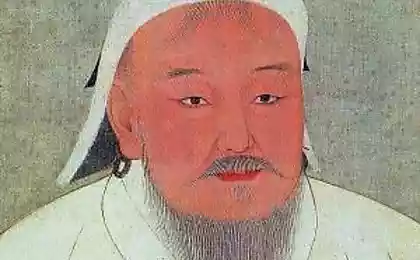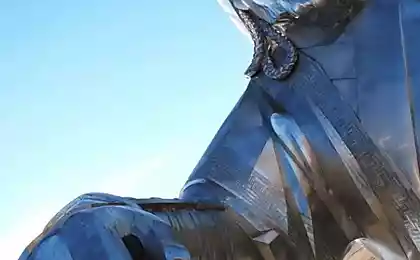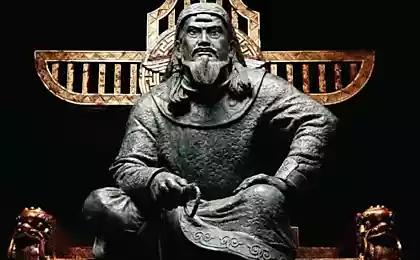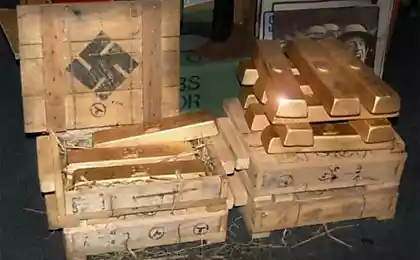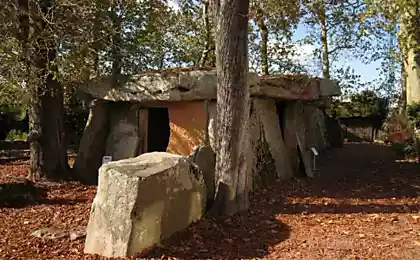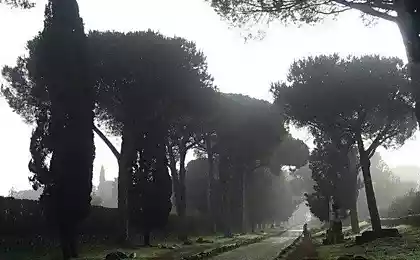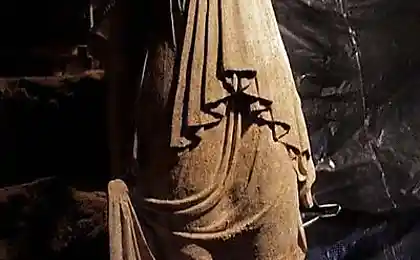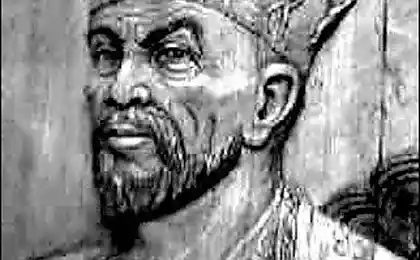808
Perhaps he found the tomb of Genghis Khan

Mongolian archaeologists reported the accidental discovery of the tomb of Genghis Khan. It is not known where he is buried the first great khan. There are many versions, where his tomb and with some frequency, there were reports about the discovery of his tomb. This time the discovery looks very convincing.
Almost 800 years is not known where he was buried the Great Khan. Even the circumstances of his death, little is known. A popular story that the founder of the Mongol Empire, asked to be buried in an unmarked grave secret. In order not to demoralize the soldiers of the Horde, according to his will, of the death of Genghis Khan announced only after the final victory over the Tangut. On the death of Khan know only the closest relatives, which organized the secret funeral.
We know that Genghis Khan wanted to be buried near the Onon River - where he was born and grew up, there was proclaimed ruler of a united people. Genghis Khan died in August 1227 in the mountains of Liupan. His body was transported back to Mongolia for burial. According to Marco Polo and Rashid al-Din, the funeral escort killed anyone encountered along the way. Khan wanted to be buried with a lot of rich objects, sacrificial horses and possibly humans. One text says that 40 girls - decorated with rich garments, gold and fine jewels - were killed and buried with him to join his spirit in the afterlife.
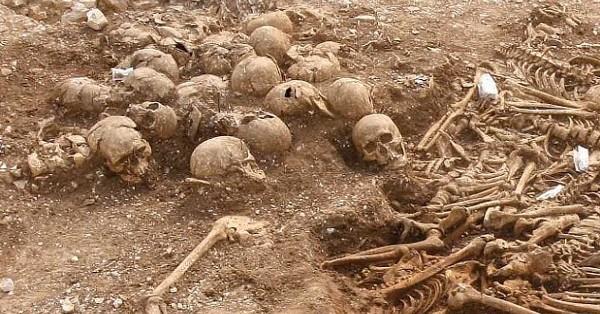
The search for the tomb of Genghis Khan held for a long time. The most promising place to look for is considered a forbidden mountain Burkhan Khaldun and its surroundings, where, according to historical records, was ancestral necropolis Temuuzhina family. Hora is listed in UNESCO World Heritage Site and any excavations in the surrounding area in the near future are unlikely. Shamanic beliefs still play an important role in the daily life of Mongolian nomads. They believe their ancestors live in holy places, and to disturb the grave unthinkable.
Another popular version - Genghis Khan's tomb is located at the bottom of the river Selenga. After his death, the emperor's sons were driven into the river valley thousands of slaves who built the dam and changed during treatment. In the bottom of the drained rock was hollowed niche where was placed the coffin with the body of the Great Khan, and then under the cover of darkness, the dam was destroyed and all who were in the valley - the slaves, the master-masons, and security guards of honor, were drowned.
Those who miraculously survived, fell under the swords of a special unit, which, in turn, was also destroyed. Thus, there was no one alive who could tell us where he found the last resting place of Genghis Khan.
To the tomb did not find casual travelers, along the banks of the Selenga repeatedly drove herds of horses. After burying his father, the Emperor's heirs held the burial rites in eight locations, and Genghis Khan's grave the secret died with his sons, who never talked about it.
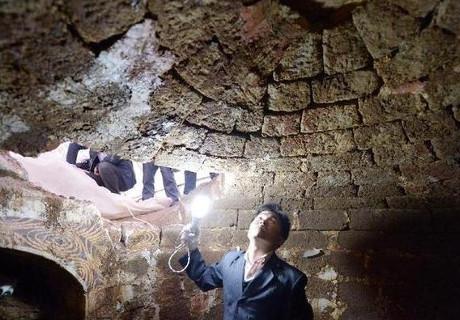
During the construction of the road near the Onon River in Khentii aimag in Mongolia, road workers found mass grave with lots of human remains, under which there is a fairly gruboslozhennoe stone structure.
Forensic experts and archaeologists have identified as the burial of the Mongol royal tomb of the 13th century, which may belong to Genghis Khan. Scientists at the University of Beijing came to the conclusion that the numerous skeletons (68 skeletons), buried on top of the tomb is likely to have been slaves who built the tomb and killed to keep her location a secret. It was also sacrificed 12 horses to accompany the Great Khan after the death.
The contents of the tomb much scattered and in poor condition - a few centuries, this land was under the bed of the river until the river Onon not changed the direction of the channel in the 18th century. In the tomb were found the remains of a tall man and 16 women among the skeletons of hundreds of gold and silver objects and thousands of coins. Women are supposed to have been Khan's wives and concubines, who were killed to accompany the military commander in the afterlife.
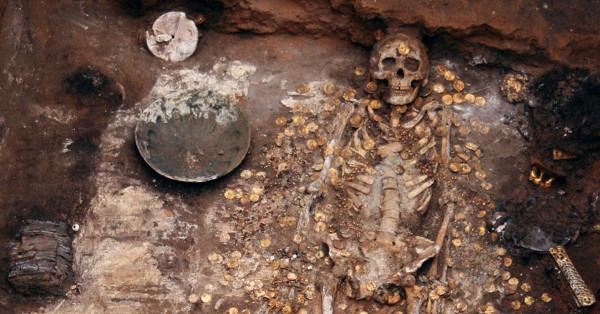
The number of treasures and the number of sacrificed animals and people, immediately raised the question before the archaeologists that it is definitely really important burial place of the Mongol warlord. After conducting an extensive set of tests and analyzes, they were able to argue that the body belonged to a man aged between 60 and 75 years, who died between 1215 and 1235 years BC. And age, date and place of burial and splendor, is likely to confirm that the tomb of Genghis Khan really belongs.
The undeniable historical significance of Genghis Khan makes a new discovery of one of the most important in the history of archeology and puts an end to one of the mysteries of history. His legacy in many forms, but his conquest, one can find today, making it one of the most influential people in the history of mankind. He joined the East and the West by creating the Great Silk Road, which became and remained for centuries the main network of trade and cultural transmission in Eurasia, opening the political and economic interaction between distant civilizations.
Khan also has an incredible number of children. Some genetic studies suggest that it may be a direct ancestor of every two hundredth of living people. Only in Mongolia from 200,000 to 2 million people are his descendants.
P.S. Regarding the tomb has a refutation asiarussia.ru/news/4903
Regarding the origin of the photo - in the comments.
More was not possible to find the exact information.
Source: geektimes.ru/post/279040/
The use of plastic bags in the UK has fallen by 85%
Ukraine intends to build in the exclusion zone around Chernobyl solar power

